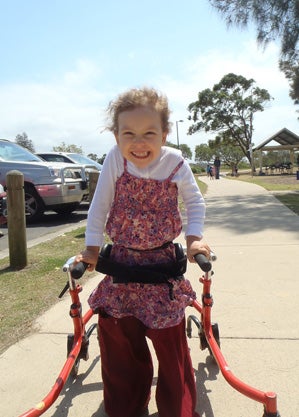
Mala is 5 years old. She has a huge smile, wild curls and a cheeky sense of humour. She is a great swimmer, bike-rider, puzzle-doer, painter, cuddler, masseuse and she loves babies and cats. Mala is a big sister and a guinea pig owner. She is learning to read and write. She also has cerebral palsy. For Mala, this means she walks with a walking frame or using her new wheelchair, rides a modified bike, swims with some floatation support, and talks with her voice, her hands and her new talking computer. Her computer also helps her to write.
Since Mala’s diagnosis, I have learnt that there are 3 well-kept secrets about disability;
1. Disability is a natural part of human diversity (not to mention that diversity is strength!).
2. What’s hard about having a disability is the issues of attitude and access; by that I mean cultural as well as physical inclusion.
3. People with a disability have more in common with people without a disability than they have differences.
As the Disability Discrimination Act celebrates its 20th birthday, we can see not only what has been done to improve Australia, but also the need for more opportunities for people with disabilities. The age of segregation and isolation is coming to an end. It is a time of choice and opportunity. People are finally being able to have a disability, not be disability.
As a parent, I have the same dreams for my 5 year old who has a disability as for my 3 year old who doesn’t. The path to achieving those dreams might be different, but the capacity to dream is the same.